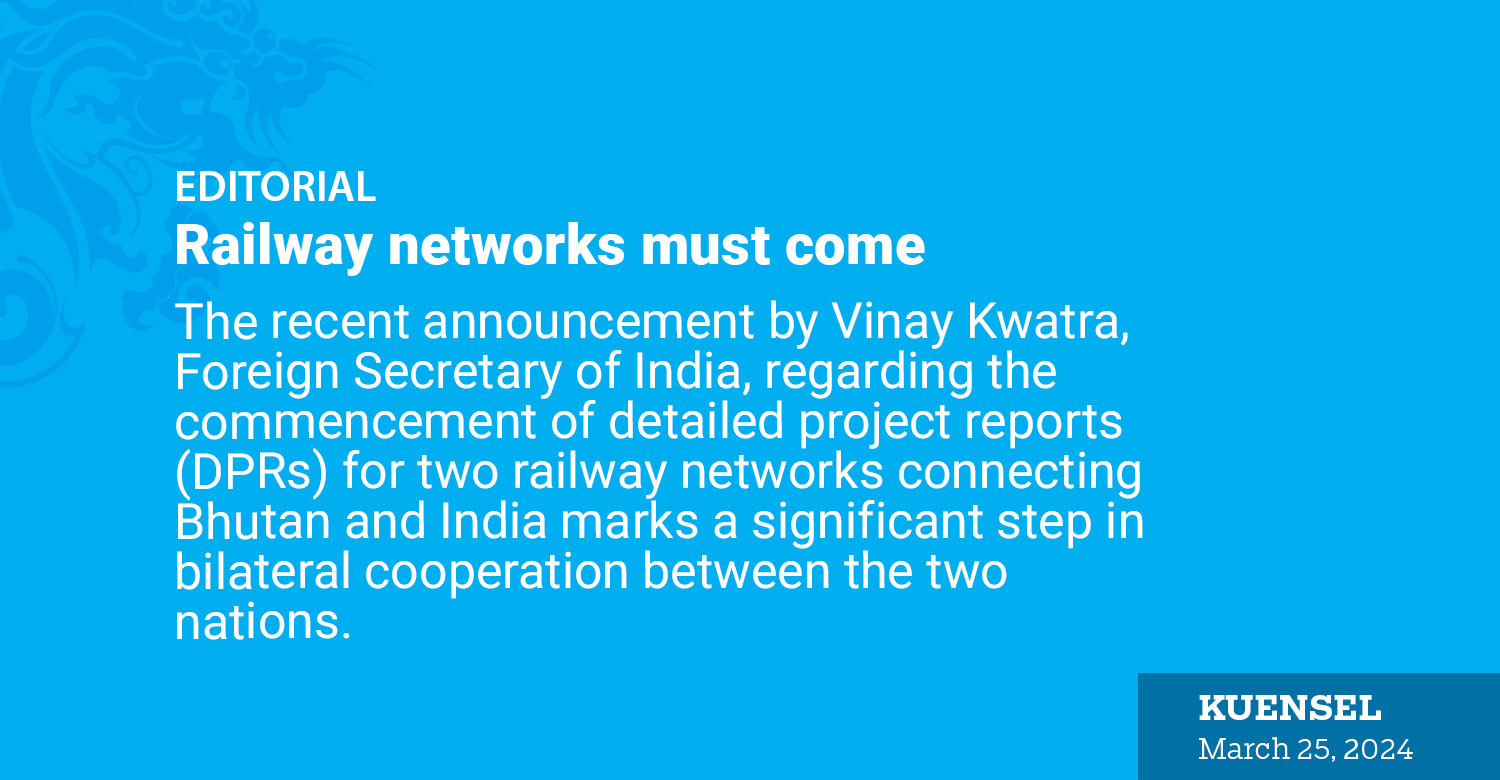The recent announcement by Vinay Kwatra, Foreign Secretary of India, regarding the commencement of detailed project reports (DPRs) for two railway networks connecting Bhutan and India marks a significant step in bilateral cooperation between the two nations.
The proposed railway projects, spanning from Gelephu to Kokrajhar, covering 60 kilometres, and from Samtse to Banarhat, spanning 18 kilometres, are poised to bolster connectivity and foster economic growth in the region.
This announcement was made during a press briefing where seven Memoranda of Understanding (MoUs) were inked between Bhutan and India.
The signing ceremony, graced by the presence of Prime Minister Narendra Modi and Lyonchhen Tshering Tobgay signifies the political will and determination to materialise these ambitious projects.
Currently, the field-level engineering study is underway, laying the groundwork for the subsequent detailed reports necessary for construction.
Vinay Kwatra emphasised the broader objective of regional connectivity, highlighting the multifaceted nature of modern connectivity, encompassing railways, infrastructure, financial, and digital linkages. He underscored the pivotal role of these mechanisms in not only bridging the physical gap but also fostering closer economic integration and people-to-people ties.
Efforts to expedite the construction process and ensure timely completion reflect the earnestness of the Indian government towards strengthening connectivity in the region.
Lyonchhen Tshering Tobgay’s recent visit to India reaffirmed the commitment of both nations towards advancing railway connectivity, with the Northeast Frontier Railway conducting the Final Location Survey in consultation with Bhutan.
The Bhutan-India railway link holds immense potential to catalyse trade and tourism, addressing the existing challenges faced by Bhutanese exporters due to logistical constraints.
By facilitating smoother movement of goods and people, the railway network is poised to invigorate economic activities and foster greater synergy between the two economies.
The genesis of this endeavour can be traced back to 2008 when the former Prime Minister of India, Dr Manmohan Singh, announced the construction of the Nehru Golden Jubilee railway link during his visit to Bhutan.
Since then, concerted efforts have been made to translate this vision into reality, culminating in the recent push towards actualising these projects.
While budgetary details are yet to be finalised, the significance of this initiative cannot be overstated. The 2005 agreement between Bhutan and India laid the groundwork for this transformative endeavour, signifying the enduring partnership and shared commitment towards enhancing connectivity and fostering mutual prosperity.
As both nations forge ahead with determination, the promise of a seamless railway network holds the potential to reshape the socio-economic landscape of the region for generations to come.


